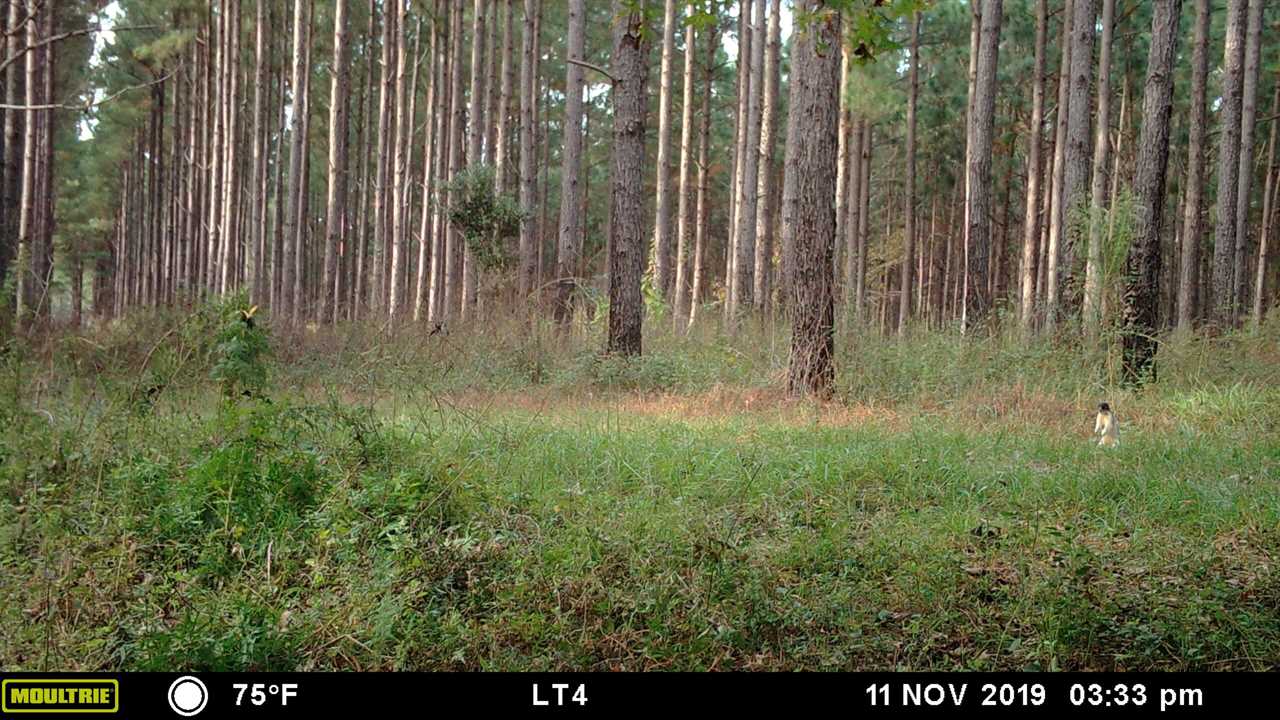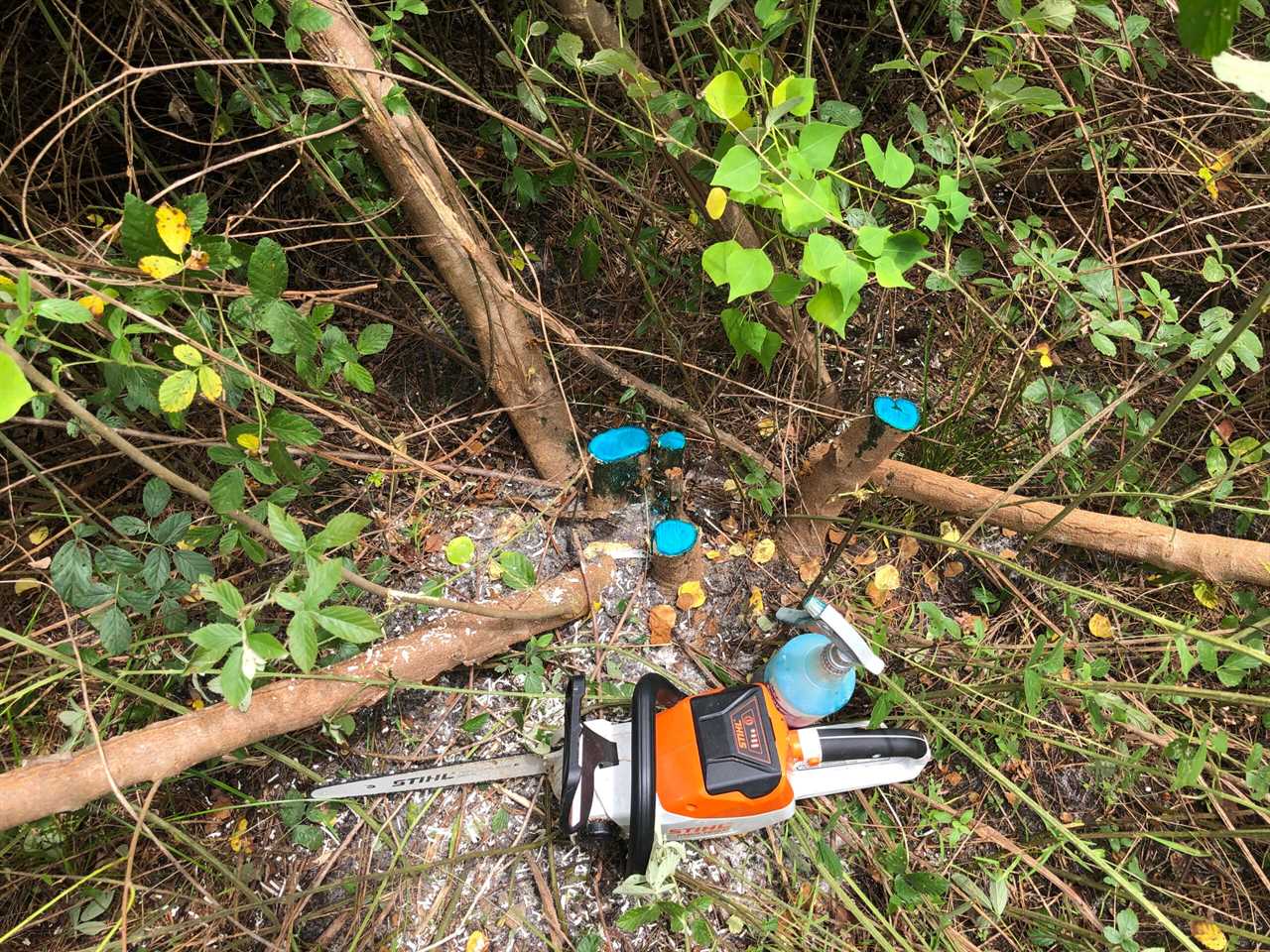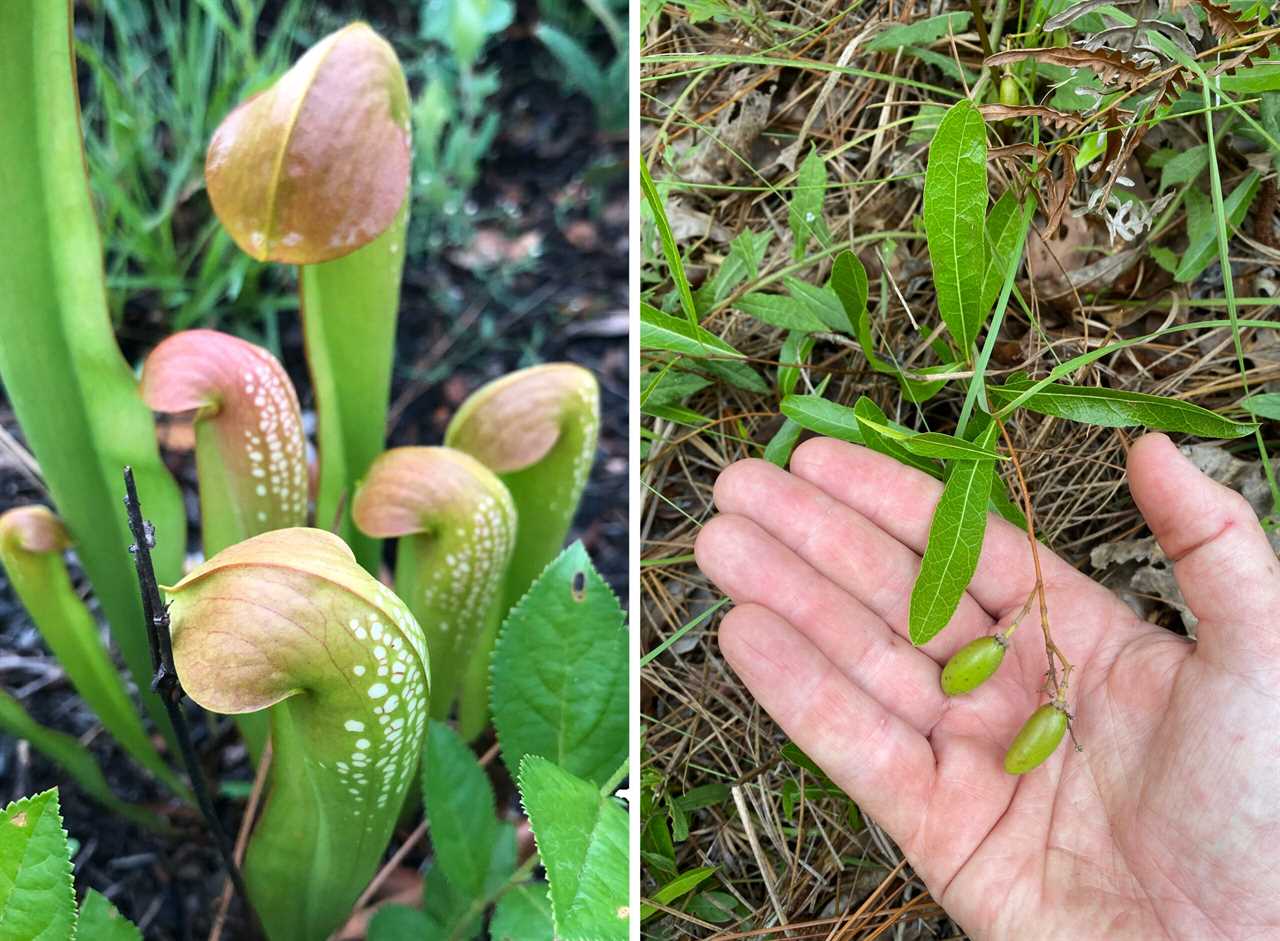Prescribed burns are just one tool deer hunters use to foster healthy habitat and native biodiversity all year long. Lindsay Thomas Jr.
As I sat in my deer stand last fall on a still, lonely October afternoon, I heard a sound behind me. I rotated my head at a speed best measured in inches per hour until I could see motion out of the corner of my left eye. Something grayish moving through dry broomsedge. I continued rotating until the movement was in better focus. What I saw was not a deer but a sight just as thrilling to me. A huge, silver-bodied, black-headed southern fox squirrel.
I grew up here on my family’s farm in southeast Georgia. I learned to fish, shoot, and hunt here. I was outdoors every day I could be. Yet I did not see my first southern fox squirrel on this land until I was in my late 40s. The last couple years, I’ve seen as many as three at once. I’ve even caught them on my trail cameras.
Why are native fox squirrels returning to our land after decades of absence? Because of deer hunting.

A southern fox squirrel, captured on the author’s trail cam. Lindsay Thomas Jr.
Other things are returning lately, too. While I was hunting shed antlers a couple of springs ago, something on the ground caught my eye. I stopped, backed up, and squatted. Growing low to the ground beneath other grasses and forbs was a small plant with a spray of little exploding fireworks for flowers. I’d never seen anything like it before.
I took a photo with my phone and later, with the help of knowledgeable folks on social media, identified the wildflower as candyroot (Polygala nana), a Coastal Plain native. Other native wildflower discoveries followed: the showy, yellow, pea-like flowers of gopherweed (Baptisia lanceolata); the almond-sized fruit of the low-growing gopher apple (Licani michauxii); the outlandish flowers of a plant with an equally outlandish name: rattlesnake master (Eryngium yuccifolium).
Why are these and other wildflowers appearing on our land now when I’d never seen them before? Because of deer hunting.
To convince you, I’ll back up to the 1990s when we began to use thinning of pine timber to restore sunlight to the forest floor along with prescribed fire to stimulate and maintain the understory plant growth that fed on the sunlight. All this work was designed to produce deer forage so we could hunt the deer attracted to and fattened on that forage.

Killing Chinese tallow tree to help native biodiversity. Lindsay Thomas Jr.
Fire worked so well for this that around 2001 my dad committed 125 acres of remaining farmland to restoration of a native, slow-growing but fire-tolerant tree species – longleaf pine. You can burn young longleaf stands with slow, “cool” prescribed fires that would kill loblolly pines of the same age. We are now planting longleaf seedlings in the understory of thinned loblolly to eventually convert those stands and continue restoring a nearly vanished ecosystem of longleaf and fire. Given sunlight again, and the natural stimulant of fire, wildflower seeds that have lain dormant in the soil for decades are finally sensing their opportunity.
Meanwhile, we’ve also worked to control invasive plant species. Chinese privet had established large patches where all other native plants were choked out, but we’ve got it nearly under control now. Chinaberry, Chinese tallow trees, and Japanese climbing fern are also invading, and we’re working to remove them now.
Fox squirrels. Wildflowers, and the butterflies they draw. Bobwhite quail. Swallow-tailed kites hunting among the tops of pine trees. Hooded pitcher plants. I hope we soon see gopher tortoises and indigo snakes return here, too, filling in more of the iconic species of the longleaf sandhills. None of this was in our vision when we started lighting fires and planting trees like longleaf pines and swamp chestnut oaks. We had deer on our minds. We’ve produced great deer hunting, but we accidentally produced forest and wildlife diversity in the process.

Hooded pitcher plants (left) and gopher apple, both of which are native to the author’s deer property. Lindsay Thomas Jr.
The longleaf pine community is unique to the Southeast, but switch it out with any other iconic plant and animal communities and you’ll find our story playing out all over the United States by other deer hunters. The proof is in the industry we spawned. Many regional and national real estate agencies now have the sole mission of selling rural lands to deer hunters. “Wildlife consulting” is now a profitable career option for wildlife biologists, exterior decorators of sorts who guide deer and habitat management on many private acres.
Deer hunters are signing up for conservation incentive programs and protecting their natural lands with conservation easements. They are using fire, killing non-native invasive plants, selectively thinning forests to call down sunlight, and in the process restoring native plants, birds, insects, reptiles, amphibians, small mammals, and more on millions of acres. For some of us, it’s no longer accidental, but wholly intentional.
Many North American animals and plants, including some that are threatened, are doing quite well by riding the coat-tails of the whitetail, and we deer hunters should take a bow on Earth Day for our habitat and biodiversity work. Scientists worldwide are concerned about the scope of extinction in our time, but because of deer hunting, they have a lot less to worry about in whitetail country.
The post Every Day Is Earth Day When You’re a Deer Hunter appeared first on Outdoor Life.
By: Lindsay Thomas Jr.
Title: Every Day Is Earth Day When You’re a Deer Hunter
Sourced From: www.outdoorlife.com/conservation/hunting-conservation-earth-day/
Published Date: Fri, 22 Apr 2022 12:39:25 +0000
----------------------------------------------
Did you miss our previous article...
https://manstuffnews.com/weekend-warriors/the-best-camping-kettles-for-2022
 Backyard GrillingWeekend WarriorsAdvice from DadBeard GroomingTV Shows for Guys4x4 Off-Road CarsMens FashionSports NewsAncient Archeology World NewsPrivacy PolicyTerms And Conditions
Backyard GrillingWeekend WarriorsAdvice from DadBeard GroomingTV Shows for Guys4x4 Off-Road CarsMens FashionSports NewsAncient Archeology World NewsPrivacy PolicyTerms And Conditions
